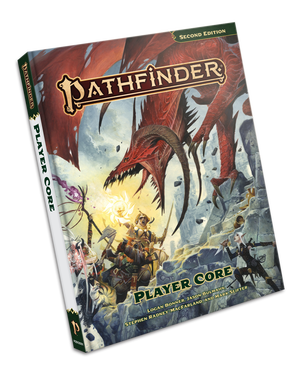Savage Worlds Fantasy; Science Fiction; Cinematic; Universal; Streamlined; Character Customization; Team-Based
Savage Worlds is a fast, furious, and fun tabletop roleplaying game known for its streamlined mechanics, universal setting adaptability, and cinematic feel. It utilizes a point-buy character creation system, exploding dice, and a unique initiative system based on playing cards. Its focus on narrative and player agency makes it suitable for a wide range of players and genres, including fantasy, science fiction, and horror.
Theme and Setting
Savage Worlds distinguishes itself as a universal system, capable of handling virtually any genre or setting. From historical settings like Victorian London in Rippers to science fiction adventures in Slipstream, and fantasy worlds in Evernight, the core rules provide a flexible foundation. This adaptability is supported by various setting books and companions that offer genre-specific rules and content.
The system encourages a cinematic style of play, focusing on dramatic action and engaging storylines. The Plot Point Campaign structure, found in many Savage Settings, presents a main storyline alongside side-quests, mirroring the experience of role-playing video games and allowing players to explore the game world while influencing the narrative.
Core Mechanics and Rules
Character creation in Savage Worlds employs a point-buy system, where players allocate points to attributes (Agility, Smarts, Spirit, Strength, Vigor) and skills. Every character starts with a d4 in each attribute and core skill. Attributes and Skills are represented by different polyhedral dice, from d4 to d12, influencing the outcome of actions.
Combat and skill checks are resolved using dice rolls against a target number (TN) of 4, or in opposed rolls against another character's skill check. The Wild Die mechanic grants player characters and important NPCs (Wild Cards) an extra d6, allowing them to take the higher result of the trait die or wild die, increasing their chance of success.
A unique feature is the exploding dice mechanic, where rolling the highest possible number on a die allows the player to reroll and add to the total result. This applies to both trait and damage rolls, adding excitement and unpredictability to the game.
Initiative is determined by drawing cards from a standard deck, with higher cards acting first. Jokers provide significant advantages, allowing players to act at any time and granting bonuses to rolls.
Bennies are tokens used to reroll dice, reduce damage, or influence the story, rewarding good roleplaying and creative solutions.
What Makes It Unique
Savage Worlds stands out due to its streamlined rules and focus on Fast! Furious! Fun! The core mechanics are designed to minimize bookkeeping and maximize player engagement.
The universal nature of the system allows Game Masters to adapt it to various genres with relative ease, supported by a wealth of setting books and licensed content. The emphasis on player-driven narratives, customizable magic systems, and cinematic action sequences further distinguishes it from more traditional RPGs. The exploding dice and benny systems add layers of excitement and strategic decision-making to the gameplay experience. The multi-action rules allow for dynamic and complex turns, though with the risk of penalties if overextended.
Target Audience and Player Experience
Savage Worlds appeals to a broad audience, from experienced tabletop gamers to newcomers. Its simple rules and adaptable nature make it accessible to players of all levels. The focus on narrative and character customization allows for personalized and immersive gameplay.
The game fosters a team-based environment, encouraging collaboration and strategic thinking. The dynamic combat system and the use of bennies create opportunities for players to support each other and influence the outcome of encounters. Overall, Savage Worlds offers a cinematic and engaging player experience, emphasizing fun and excitement over strict realism.



